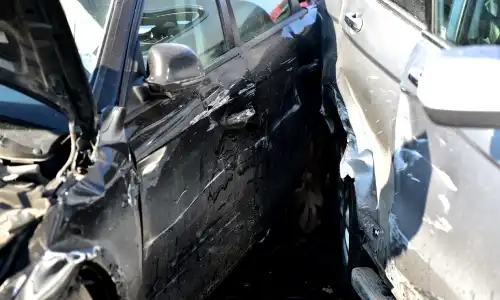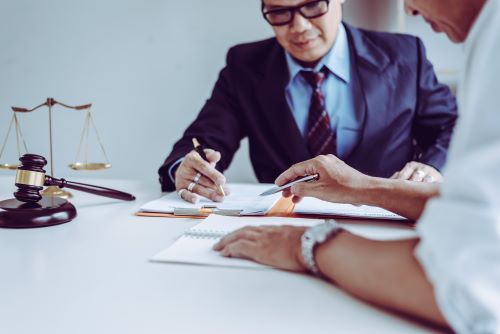 Obtaining a copy of the police report after a motor vehicle collision is crucial for effectively processing your insurance claim. Generally, these reports are accessible within 15 days of the accident.
Obtaining a copy of the police report after a motor vehicle collision is crucial for effectively processing your insurance claim. Generally, these reports are accessible within 15 days of the accident.
However, the procedure for acquiring a car accident report varies from one city to another. In this guide, we’ll outline the necessary steps and provide additional insights into what you should be aware of regarding the report.
Acquiring the accident report is only the initial stage in navigating through the complexities of an insurance claim. Many people encounter hurdles during this process, including claim denials or undervalued claims.
At Singh Ahluwalia Attorneys at Law, our legal experts are ready to assist those injured in car accidents in recovering compensation. If you or someone you care about has sustained injuries in a car accident, we encourage you to reach out to us for a complimentary consultation.
Let us help you understand your legal rights and explore available options.
The Clovis Car Accident Report Process
The Clovis Police Department does not offer car accident reports online or by mail, but you can obtain one in person or over the phone.
The first step is to call the Clovis PD’s Records Division at 559-324-2400 during normal business hours. They will likely ask for an incident number or collision report number, which you can usually find on any paperwork the responding officer provided you at the scene.
You’ll also need to give them the date of the accident and your last name.
Once the records officer has located your report, you’ll pay $7 to obtain a copy. VISA, Mastercard, and Discover are all accepted.
After the Clovis PD receives your payment, they will email you the report within 30 minutes.
Can Anyone Obtain a Copy of a Clovis Traffic Collision Report?
Under California law, the following parties can receive a copy of a traffic accident report:
- An involved driver
- The parent or legal guardian of a minor driver involved in the collision
- A driver’s authorized representative (usually an attorney)
- A person injured in the accident (including pedestrians, bicyclists, and other vulnerable road users)
- The owner of any damaged property (including vehicles, buildings, and other stationary objects)
- An attorney representing any of the above parties
What Should You Look for on an Accident Report?
You should skim the report and ensure all the information is correct to the best of your knowledge. It contains information about each driver, including contact and insurance information.
If there is no insurance information listed for the other driver, that could be potentially concerning, as it might mean the other driver is uninsured. However, you may still be able to recover from your own insurance policy if you have uninsured/underinsured motorist coverage.
Later in the report, the officer notes contributing factors to the accident, such as poor weather or road conditions, driver inattention, and whether an involved party was intoxicated. This section includes the type of crash (head-on, rear-end, etc.), whether traffic controls were functioning (for intersection accidents), each vehicle’s movement prior to the collision, and pedestrian actions (if a pedestrian was involved).
Sometimes, people disagree with the information in this section. Because the officer usually did not witness the accident, they’re relying on witness statements and evidence at the scene, such as tire marks and vehicle damage. In some cases, evidence could be conflicting or witness statements inaccurate.
For instance, the other driver or another witness might claim they saw you using your smartphone before the accident. You notice the officer checked a box for handheld phone use, but you weren’t using your phone.
As a result, you feel this information is inaccurate and unfairly paints you as a negligent driver.
These situations may be frustrating, and some people decide to call the police department and argue about what happened. Please don’t do that; it’s very easy to accidentally worsen the situation instead of improving it.
Instead, we recommend you speak with a Clovis car accident attorney right away. We’ll investigate your accident, and with appropriate evidence, we may be able to challenge the police report in court.
What if the Insurance Company Believes You Are at Fault Based on the Police Report?
Again, we would caution you not to call the insurance adjuster and attempt to enlighten them. You might unintentionally say something else that they misinterpret as a sign of fault.
Instead, talk to an attorney who can advise you on how to move forward.
Determining fault is also complicated by California’s pure comparative negligence laws. These laws allow two or more parties to share fault for an accident or injury, so it’s possible that both you and the other driver contributed to the crash.
If this is the case, you can both recover the other party’s portion of your damages from their liability insurance. So, if you are 20 percent at fault, you can recover 80 percent of your damages, and vice versa.
The concern is that one or both insurance adjusters may overestimate your percentage of fault, causing you to collect a smaller settlement. A Fresno experienced car accident attorney will review the evidence, and if there is a discrepancy, negotiate with the insurance carrier for a more accurate accounting of your contributions.
How Can You Learn More About Your Accident and Options?
Please contact Singh Ahluwalia Attorneys at Law for a free consultation. We’ll review the details of your case, answer your questions, and explain your options for pursuing damages.
If there is a way to recover compensation, we’ll find it. There are no upfront fees, and you won’t pay us anything until we win or settle your case, so don’t hesitate to contact us at (559) 878-4958 for more information.
Founder and managing partner Deepak Ahluwalia established the firm to provide excellent legal help for those who need it most. He and his legal team have been featured in national news sources, including CNN, NPR, and the Wall Street Journal.
Additionally, they’ve offered legal clinic guidance to Harvard and Stanford universities.


